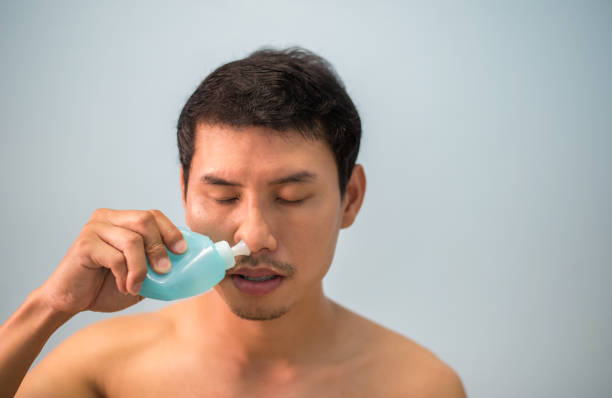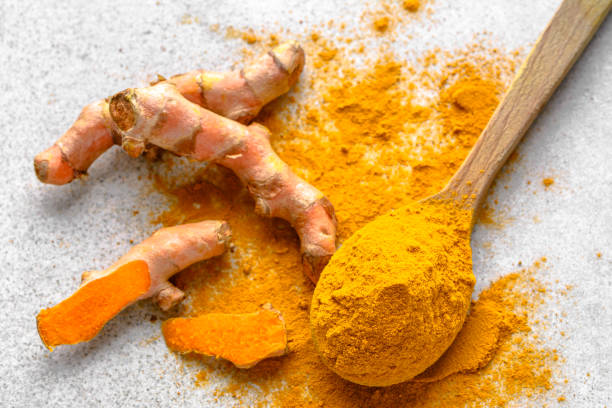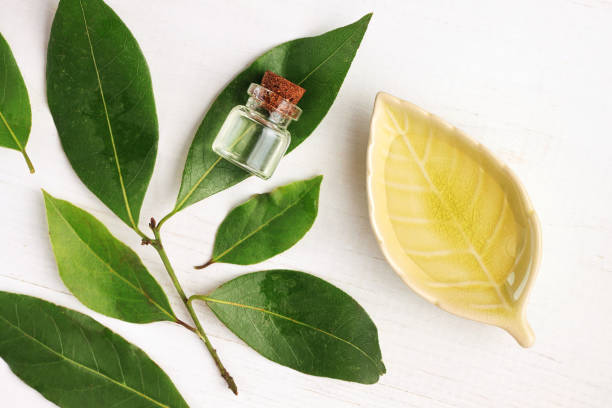Sufferers of a runny nose may consider a variety of remedies for their rhinitis, including modern medicine, home remedies, and alternative medicines. For those who are seeking relief through all-natural methods, many remedies are viable options.
All of the remedies that have been researched below are relatively safe and can usually be attempted with household items.
As with trying anything new, readers are cautioned to be mindful of allergies and limitations when trying any of the included methods.
Neti Pot

A classic solution to sinus congestion, the Neti Pot, may be one of the favorites of the older and younger generations alike (if they don’t mind a little water in their nose).
History of the Pot
The Neti Pot dates back to an Indian practice called “Ayurveda”, which translates from Sanskrit to “the science of life”. Ayurveda was developed in India over 3,000 years ago and was often considered one of the world’s oldest forms of holistic medicine. The practice was based on the belief that the spirit, body, and mind must maintain a balance to be in good health. Modern Ayurveda is considered a “complementary and alternative medicine” (or CAM).
In the practice of Ayurveda, hygiene was performed according to ancient scriptures, known as “soucha”. A portion of “soucha” called for the daily cleansing of the nose with water. Jala-neti, as it was called, often used isotonic salt water to clean the sinuses believing that it was essential to clear thinking. Practitioners of Ayurveda and Soucha would use a ceramic pot (known as a “neti pot”) to take the solution into one nostril and out the other, sweeping debris with it. Other forms of Jala-neti practice would have the practitioner inhale water through the nose and out through the mouth, or vice versa.
How it Works
Nasal irrigation is an effective method of clearing dirt and mucus from the nasal passage and sinuses. As previously described, the most popular form of nasal irrigation utilizes a pot with an elongated spout. The pot is filled with a saline (or salt) solution mixed with distilled, sterile, or boiled and cooled tap water.
It is important to note that the FDA has issued a warning in regards to using tap water in nasal irrigation and Neti Pots. The FDA stated that tap water often contains low levels of microorganisms, such as bacteria and amoebas. During normal consumption, these organisms are killed by stomach acid. Without being killed by stomach acid, these organisms can stay alive and potentially cause deadly infections. One such infection the FDA referenced is the Naegleria Fowleri, also known as the “brain-eating amoeba”.
If tap water is to be used for nasal irrigation, ensure that the water is boiled for three to five minutes and is cooled to a lukewarm temperature.
How to Make the Solution
A relatively basic and safe solution for use in nasal irrigation follows this basic recipe.
Basic Rinse:
- 16oz of lukewarm water
- Distilled, sterile, or boiled/cooled
- 1 tsp of salt
- ½ tsp of baking soda (optional)
Steps for Successful Usage
The FDA has provided a general set of guidelines for the usage of a Neti Pot:
- Tilt your head sideways so that your forehead and chin are relatively level. This is done to ensure that none of the solution comes out of the mouth.
- Breathe through your mouth and insert the spout into the upper nostril. Pour water through the upper nostril, allowing the water to drain through the lower nostril.
- Allow water to drain from the lower nostril completely.
- Breathe in and out through the nose to completely dry the nostrils.
- Repeat as necessary to remove dirt and mucus.
Side Effects
While generally harmless, there are a few varying side effects that are recognized. Some of the more obvious short-term side effects include light irritation and discomfort. Additionally, nasal irrigation is not recommended for those who are prone to nosebleeds, as this may worsen the condition.
A less obvious and more long-term side effect was found in a 2009 study by the American College of Allergy, Asthma, and Immunology. This study stated that frequent use of nasal irrigation methods removed or diluted nasal mucus. Nasal mucus contains antibacterial and antiviral agents that greatly assist the immune system. The long-term reduction in this mucus can cause a weakened immune system.
In instances where tap water is used (without boiling), bacteria can be allowed to grow within the sinuses and nasal cavity. This may cause the aforementioned “brain eating amoeba”.
Herbal Teas

For those who are more familiar with alternative medicine, herbal teas may not be a new concept. These teas are brewed with a variety of plants and herbs to treat a variety of conditions.
A Brief History of Herbal Teas
It is widely accepted that tea was first discovered in China, likely around 1500 BC during the Shang Dynasty. According to Chinese folklore, mythical Emperor Shennong was drinking boiled water in a bowl when leaves from a nearby tree fell into the bowl. When the water began to change colors, Shennong tried the liquid and was surprised by how it had changed. Different versions of the tale allege that Shennong then experimented with various plants and herbs, some poisonous.
Tea has played a large role in Chinese medicine, status, and leisure for centuries. In recent years, thanks to a surge in alternative medicine, herbal teas are becoming more popular in other parts of the world.
Herbal Teas for Congestion
There are dozens of herbs that can be used to make tea with decongestant properties. Some of the herbs that are believed to be decongestants include:
- Chamomile
- Ginger
- Mint
- Nettle
- Elderberry
- Hibiscus
There are many more herbs that are believed to have decongestant properties. In fact, there are far too many examples to name in one article. When ingesting any of the herbs in the form of tea, it would be best practice to allow the heat and steam to open congested airways. Inhale the steam and vapors from the tea for a brief period before enjoying the tea while it is still hot.
Proponents of herbal medicine find that herbs are often cheaper than conventional medicine and have fewer side-effects associated with them. This is not to mention the requisite visit to the doctor for a prescription when the proper treatment is not available over-the-counter.
Runny Nose – Herbal Tea Recipe
For a relatively simple herbal tea that will help decongest and dry up a runny nose, give this recipe a try. It may just help to clear your symptoms.
Ingredients:
- 1 cup Water
- 1 tsp Ginger
- ½ tsp Cinnamon
- 3 tsp Honey
- ½ tsp Garlic
- 1 Tbsp Lemon Juice
Directions:
- Boil water in a saucepan over medium heat.
- Add all ingredients to boiling water and boil for two additional minutes.
- Remove from heat and allow to steep for five minutes.
- Strain out any particles and drink while hot.
Spicy Foods

While spicy foods may actually cause a person’s nose to run, it may help with congestion. If you have ever eaten spicy food, you know the effect that it can have on your sinuses.
How It Works
Most people have made the connection that spicy foods cause their noses to run and their sinuses to open. This is due to the chemical that makes food spicy, known as “capsaicin”. The capsaicin, when ingested, irritates the pain receptors and mucous membranes in the mouth and nose. The irritation of these mucous membranes causes the membranes to excrete additional mucous.
When the nasal passage is obstructed or congested, the ingestion of capsaicin can cause mucus to be secreted that clears the nasal passage. This relief is usually only temporary until the capsaicin effects have passed, and the nasal passage again becomes congested.
Spicy Examples
There are many specific examples of foods that are beneficial for temporarily decongesting. Spicy foods generally fall into two categories, those that contain capsaicin and those that contain isothiocyanate. In either case, the nasal passage and sinuses are partially cleared, but the consumer will notice a difference in taste and effect between the two. While capsaicin “burns” the tongue and face, isothiocyanate is a “nasally” heat that “burns” the sinuses. Some examples of food to eat when congested include:
- Horseradish
- Wasabi
- Peppers
- Hot Buffalo Wings
- Hot & Spice Noodles
- Chili
- Hot Sauce
One should be cautioned that while these foods will temporarily provide relief for congestion, they may irritate an upset stomach.
Capsaicin Nasal Spray
As previously mentioned, capsaicin is the compound that makes some foods “spicy”. It has been used for hundreds of years to treat congestion in one form or another, usually through eating spicy foods. Recently several companies have created nasal sprays containing capsaicin that irritates the mucous glands in the nasal passage that helps to decongest the user. These products are usually available over-the-counter, and many contain all-natural ingredients.
One of the popular brands of these nasal sprays, Sinol, boasts that their product is all-natural, and users experience no harsh side effects. The active ingredients in Sinol are just capsaicin and eucalyptus oil. The inactive ingredients are also relatively simple, as purified water, aloe vera extract, rosemary extract, sea salt, vitamin C, benzalkonium chloride.
Turmeric

Turmeric is a spice that has been used for a variety of purposes for thousands of years. It is readily available at most supermarkets, and most people will likely have it in their pantry.
History of Turmeric
Turmeric has been used for medicinal purposes for many thousands of years, branching out from Southeast Asia into Africa, China, etc. There it was used as a spice, medicine, and even for religious worship. Similar to Neti Pots, the use of Turmeric as a medicinal item may have stemmed from Ayurveda, where it was described as to relieve the effect of “poisoned” foods.
Similar in color to the valuable Saffron, Marco Polo was amazed by the spice during his visits to Asia. Unlike Saffron, Turmeric is very cheap and relatively easy to harvest.
Traditionally, Turmeric was used to treat worms, arthritis, gas, asthma, allergies, and other ailments. In some parts, Turmeric was also used as an antiseptic in wounds. Throughout history, the use of Turmeric for medicinal purposes has decreased in popularity as modern medicine begins to sweep into the far corners of the world.
In the last several decades, the use of Turmeric has been explored more in modern medicine, and several thousand studies have been published on the subject.
Turmeric for Congestion
Turmeric, along with the aforementioned ailments, can assist in treating a cold. This is due to strong antioxidant, anti-inflammatory, and antibacterial properties found within the spice. Several different methods may be used when treating a cold or runny nose with Turmeric. In any of the methods, you should not consume more than a full teaspoon per day.
Before Bed
If you wish to take Turmeric before bed for the treatment of a runny nose, you will need to dissolve one teaspoon of the spice into a full glass of water. Though it might taste slightly off-putting, you may awaken feeling some of your symptoms have improved.
Dry
If you wish to take the dose of Turmeric dry quickly, you may do so twice per day in the amount of ½ teaspoon in both doses. You can take the Turmeric with water (and in fact, you may need to swallow). Taking the Turmeric in this method may assist in loosening mucus.
Inhaling the Vapors
If you wish to inhale the Turmeric dose, it is possible to do this through the use of Linseed Oil. Mix ½ teaspoon of Turmeric in Linseed Oil, and slowly heat over medium heat. When the mixture begins to smoke, inhale the vapors through the nose. This will assist in drying the mucus in the nose and providing relief.
The Future of Turmeric in Medicine
Recently there have been more studies into traditional and alternative medicine. Turmeric is no exception to this, and there have been several studies into the medicinal properties of Turmeric. One study showed that the use of Turmeric in a certain form inhibits influenza and several other viruses.
This finding is consistent with what practitioners of alternative medicine have claimed. While the effectivity of Turmeric against influenza may not be to the same degree as some modern medications, it may eventually be a suitable alternative for some individuals.
Another study conducted in the last decade has shown that Turmeric inhibited dermatophytosis, a fungal infection, in guinea pigs. While human trials of this method have not been reported, they are likely to come soon.
Camphor

Camphor, being the main active ingredient in Vicks VapoRub, can be effective at clearing congestion, runny noses, and cold symptoms.
Early Camphor
Camphor is found in the wood of the camphor laurel tree found in Asia and another similar species of the same region. It is collected by condensing the vapor produced by the burning of the tree.
It has been used for many years in a variety of different methods, including both medicinal and in some foods. Some of the earliest forms of traditional medicine that utilized Camphor used the substance to treat swellings and sprains.
Around the turn of the twentieth century, the compound was incorporated into Vicks VapRub as a decongestant.
Using Camphor
To use Camphor for decongestant properties, it is best applied in the same manner as the VapoRub product. To make an all-natural version of this cream, follow the basic formula below:
Ingredients
- 1 Tbsp Coconut Oil
- 1 Small Camphor Block
Directions
- Melt coconut oil in a hot pan and remove from heat.
- Combine melted oil with Camphor Block and mix to incorporate.
- Apply to the upper chest while warm, but not hot.
Tomato Tea
Delving into some of the stranger methods of decongesting, there are several sources that claim Tomato Tea to be the perfect solution.
What is it?
Tomato Tea is really just a sort of tomato soup with some added ingredients that can aid in decongesting. Each source of information on the concoction lists a different recipe and some slightly varied ingredients, but the general formula is tomato juice, garlic, and lemon.
The lemon that is added to the “tea” is likely the main decongestant. Lemon is present in several other home remedies for congestion and rhinitis, including tea with lemon, lemon with honey, and hot lemonade. The addition of garlic adds decongestant to the brew, as garlic has its claim to decongestion.
Studies have found that garlic has antibacterial properties, through the creation of “allicin” when crushed. Allicin alone can be purchased in supplements and aids in thinning mucus and anti-inflammation.
Hot Tomato Tea Recipe
Ingredients:
- 2 cups Vegetable Juice
- 3+ Cloves of Garlic
- ½ Lemon, Squeezed
- 2 Tbsp Hot Sauce
Directions:
- Heat the vegetable juice in a saucepan over medium heat.
- Add garlic, lemon juice, and hot sauce. Allow simmering for 2-3 minutes.
- Sip while warm.
Paleo Diet
The last outside-the-box solution researched for this article to aid chronic congestion is a “paleo diet”. This is essentially just a diet consisting of foods that hunter-gatherers would have eaten several millennia ago.
How?
The basics of a Paleo Diet are avoiding processed foods, unnecessary sugars, artificial sweeteners, and most dairy products. Most sources generally agree that a Paleo Diet does not need to be unnecessarily complicated and that the participant should just eat “cleanly”.
The broad categories of food that a Paleo Diet will stick to are meat, fish, vegetables, nuts, fruits, seeds, herbs/spices, and some healthy fats.
By avoiding processed foods, many believe that the diet will improve overall health and specifically lowers the risk of heart disease and obesity. The avoidance of dairy, sugars, and starches decreases mucus production.
Simple Meal Plan
Participants in the Paleo Diet can be creative with their meals and have a wide variety of meals in their diet. Following the above guidelines, participants can follow the general rule of, “If has seen a factory, avoid it.”
Below is a simple meal plan for a day:
Breakfast
- Bacon
- Eggs
- Banana
Lunch
- Lettuce Wrap
- Nuts
- Avocado
Dinner
- Steak
- Vegetables
- Salsa
Snacks
- Nuts
- Strawberries
- Hard Boiled Eggs
Coupled with Exercise
Any diet should be paired with a structured workout routine for the most benefit, but this should be done gingerly when ill. The readers of this article are likely facing congestion from the common cold or other ailments, and it is essential to note that exercise should be done with caution.
Research shows that strenuous exercise for a prolonged session may serve to weaken the immune system, further complicating the already existing problem.
Though strenuous exercise for a prolonged session may weaken the immune system, strenuous exercise in a short session may actually assist the immune system in the long term. Studies have shown that exercise, when regimented and controlled, can strengthen the innate immune system over time.
Exercise is a stress on all of the body’s systems which the body adapts to overcome. In the long term, this is what causes muscles and the immune system to strengthen.
Learn What Works Best For You
Everyone is different. The methods that were described above have been studied and proven effective in some individuals. If one method is attempted and does not provide relief, there are a multitude of other remedies that can be attempted. If none of the methods work, one might research their own methods or opt for more conventional medicine.
Additionally, it is vital to get plenty of rest with any illness and not exhaust all energy in search of a cure for your ailment. With some rest and some quick home remedies, runny noses will be a thing of the past.

